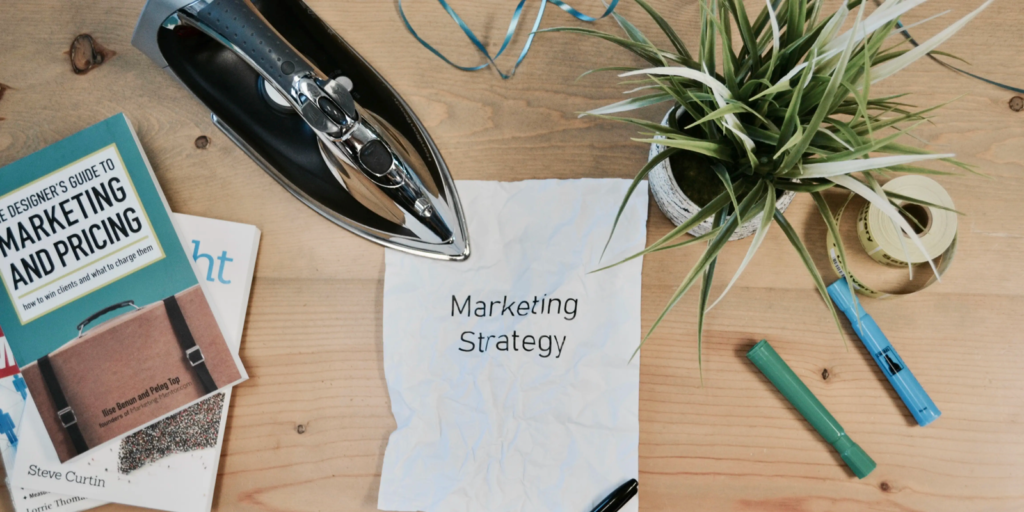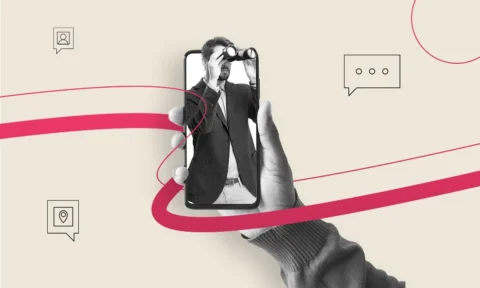Imagine you’ve tried everything you can think of to get people to buy your product, but nothing works.
You reevaluate your marketing funnel but realize you may need a sales to funnel instead. Both seem to do the same thing, but they serve unique purposes, but they’re quite different.
Read on to learn how they compare and why you may need both.
How a Marketing Funnel Works
A marketing funnel has multiple stages that people can go through as you promote your business to them. Once people enter the first stage, they can go through the other steps.
Eventually, you’ll be able to sell to the people in your marketing funnel. However, a marketing funnel is more about promotion, while a sales funnel focuses more on converting leads.
Both types of funnels work similarly in that they have different stages. But a marketing funnel can be useful for long-term sales rather than immediate conversions.
When creating a marketing funnel, you should consider how to make each stage work. Then, you can make the system more successful.
Top of Funnel
The top of the funnel contains the awareness stage, which helps you build brand awareness. People aren’t going to be ready to buy anything from you, but they may purchase in the future.
Your goal at this stage is to tell people about your business and what you offer. Odds are, people haven’t heard of your company before, or they’ve only heard of you once.
Using data about your existing audience can help you target potential audience members. You can use free content in the form of images or videos to help attract people.
This marketing funnel stage can hold a lot of people, and you’ll start to filter people out. That way, you’ll be able to market to people who are more likely to buy.
Middle of Funnel
After people enter the funnel, they may stay at the awareness stage, but others will move down to the consideration stage. Here, they already know your business exists and what you offer.
You can start to build relationships with people at this stage. Social media marketing and search engine marketing (SEM) are great strategies to use. Retargeting can also help you attract people back to your website and get more traffic.
Learning about your ideal customer and what makes them buy something is also useful. Then, you can use the right keywords to show up in search results for relevant search terms.
This stage is also where you can get people to take a small action, such as sending a contact form or joining your email list. That way, you’ll get them further down your marketing funnel.
Bottom of Funnel
At the bottom of the funnel, you have the conversion stage. You can continue to use the same marketing methods as before, such as social media and SEM.
Be sure to target people who have expressed interest in buying your product or service. Consider creating different emails for groups of people to help increase your conversion rate.
You should know these people relatively well, so you can figure out how to word your emails. And you can continue to use contact forms and eBooks or webinars to help.
The people at this stage may already know, like, and trust you, which will make getting sales easier. You should keep nurturing these leads to help qualify them for your sales funnel.
Marketing Qualified Leads (MQLs)
As someone gets to the bottom of your marketing funnels, they can become a marketing-qualified lead (MQL). These leads are the most likely to turn into paying customers.
One way to qualify leads is to look at the keywords they used to find your business. If they used keywords related to your primary product or service, they’re a better lead than someone who searched for something random.
You can also create custom forms with questions that lead to answers to filter leads. That may help you get an idea of the product or service that the lead will want.
Then, you’ll be able to set up your sales funnels and add people to the best one for them. Doing so will help increase conversions later on.
Pros and Cons
One of the biggest pros of a marketing funnel is that it can help you build relationships. While you may get some sales with cold messaging, warm leads are easier to sell to.
You can also better understand your buyers and the journey they take. If you lose a lot of leads in one stage, you can rework it to keep more people in the marketing funnel.
As your business grows, your marketing funnel can also grow and change with it. Then, you’ll be able to keep getting leads and funneling them through each stage.
Unfortunately, leads may exit your marketing funnel as soon as they make a purchase. It can be harder to turn them into lifelong customers when that happens.
How Sales Funnel Works
On the surface, a sale funnel works very similarly to a marketing funnel. You can and should use both together to create a successful funnel.
However, while the marketing funnel focuses on promotion, the sales funnel’s goal is to increase sales and revenue. When using a sales funnel without a marketing funnel, the top will be the same: building awareness.
In a sales funnel, though, you want to move leads more quickly to the bottom. You don’t want to spend as much time nurturing leads because that’s not the primary objective.
A sales funnel can also pick up where a marketing funnel leaves off. Then, you can increase sales compared to only using a marketing funnel.
Marketing Qualified Leads (MQLs)
Once you get people into your sales funnel, you can focus on qualifying them for sales. Use the same tactics to qualify leads as in your marketing funnel.
Consider the quality of the lead, including the chance of that lead becoming a customer. You can look at the keywords that the lead initially used, and think about the content they found in your marketing funnel.
Business owners can also qualify leads after the leads join a company newsletter, download content, or fill out a form. Keep a record of what your leads do to help qualify them for the sales process.
Sales Accepted Leads (SALs)
Next, you’ll move MQLs to the sales accepted leads (SALs) stage of your sales funnel. If you have a sales team, you can assign leads to your representatives.
But if you don’t have a sales team, you can still move these leads to your sales process. You or your sales team will then research the lead and determine if they should move to the next stage.
Sales leads will either move on, or they will exit the sales funnel if they aren’t the right fit for your product or service. Either you will move the leads to the next stage, or they’ll leave the funnel themselves.
Sales Qualified Leads (SQLs)
After you qualify your leads, you’ll move them to this stage as sales-qualified leads (SQLs). You or a sales representative can contact the lead by email or phone.
Ask the lead some questions about their needs and budget to learn how you can help. Consider when you can follow up with the lead so that they have time to decide if they want to buy or not.
Leads may stay in this stage for a while, especially if you have a lot of leads but not enough time to contact them all. But don’t let them linger too long, or else they may exit the funnel.
Instead, create a schedule to make sure you email or call all of your leads. Then, you can contact them again to follow up and close the sale.
Closing the Deal
This is the part of the sales funnel where a lead will take action and buy your product or service. You should track how many leads make it to this stage and how much revenue each sale brings in.
Use that information to better optimize your marketing and sales funnels in the future. If you find that people don’t usually make it to the end stage, you can analyze where they leave the funnel.
Adjust that stage to help people progress. Sometimes, a small change will help increase conversions. And you can figure out how to automate some sales to save time for you and your sales team.
Pros and Cons
The first advantage of a sales funnel is that it bridges the gap between marketing and earning revenue. While some leads may convert at the end of the marketing funnel, not all will.
By qualifying and accepting leads, you can provide a personal touch to each sale. You can contact leads and answer their questions and concerns, which may help you get more customers.
Sadly, a sales funnel doesn’t work for every business, such as professional services. People need to know and trust you before they hire you to create a service, and funnels don’t always convey that expertise as well as referrals or reviews.
Getting sales can also involve cold leads and warm leads. Cold leads don’t go through a funnel the same way as warm leads, so you may get more sales outside of the funnel.
Do You Need Marketing and Sales Funnels?
As long as you implement them well, your marketing funnel and sales funnel can work well. They can also work together to turn cold leads into loyal customers.
However, you need to make the most of each funnel stage to keep your business from failing. That means choosing the right sources to find leads and creating content that will help them move through the funnel.
If you don’t have a product yet, you may want to focus more on a marketing funnel. Then, you can build relationships, and you’ll have an audience ready to buy when you do release your first offer.
Why Is It Called a Funnel?
When visualizing a marketing or sales funnel, you can see that it looks like a physical funnel. The top is bigger and contains more leads, and some of those leads will move to the bottom.
Each stage filters out people so that the highest-quality leads move to the next step. While you may want all of your leads to move through the whole funnel, that usually doesn’t happen.
Do Funnels Really Work?
Funnels are a great tool to help you build relationships with potential customers and get sales. You can also use funnels to increase website traffic.
By adding content to your website and providing value in and out of the funnel, you can help your business succeed. Funnels can also help automate some of the marketing and sales processes, freeing up time for you to work with clients and customers.
If you find your funnels aren’t working as well as you want, analyze each stage. Consider when you lose a lot of leads and how you can change the funnel to keep that from happening.
How Do You Make a Marketing or Sales Funnel?
You will need to create a landing page or some other place for people to enter your funnel. This may also be a social media page or something similar.
Include something unique and valuable to offer your audience, such as a free download. Ask for someone’s email address in exchange for the free offer.
Send valuable emails and share social media posts that will help your leads. After you nurture your leads without annoying them, you can sell to them and, hopefully, close the sale.
Keep building relationships with your leads whether they buy or not. They may buy your next product or service, or they may need time to save up to afford your current offer.
Marketing Funnel vs. Sales Funnel: Which Will You Create?
A marketing funnel can be a great way to promote your business and build an audience. On the other hand, a sales funnel is an effective tool to help sell your products or services.
Using both will help you take advantage of the pros and cons of both systems. That way, you can build your audience and increase revenue.
Do you need help building a home for your business and its marketing funnel? View our services to learn how we can help.



